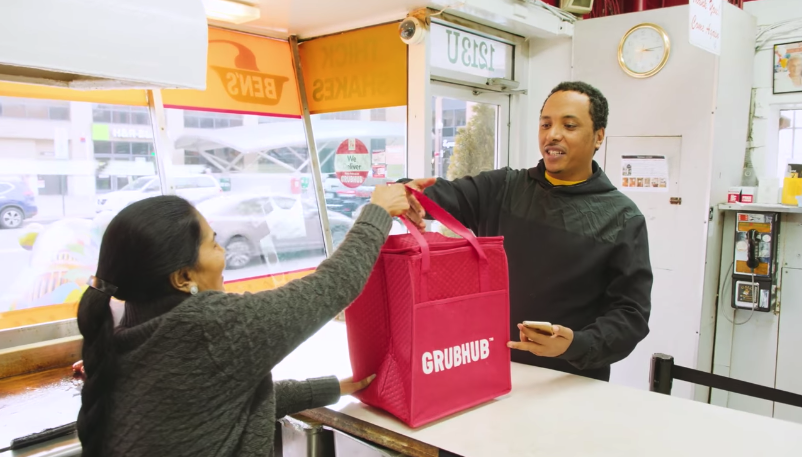In the wake of WeWork’s near implosion and fresh memories of Uber’s $5.2 billion quarterly loss earlier this year, a range of business pubs are claiming that the era of growth-before-profits companies is coming to an end, including third-party restaurant delivery services. With this highly pressurized backdrop, publicly traded Grubhub is set to release its third-quarter results two days before Halloween.
As Grubhub’s shares have fallen nearly 50 percent from previous highs back in the salad days of late 2018, market intelligence firm Cowen published a preview of Chicago-based Grubhub’s third-quarter earnings. Cowen’s Thomas Champion said the company’s projections “look achievable,” including increases in revenue and gross food sales. He added that “the broader question is whether management will make good” on its previous predictions for hitting approximately $1.50 in earnings per order in the fourth quarter of 2019.
“Recent stock action suggests many investors in doubt,” Champion said, adding that his team still feels Grub’s shares are oversold, even though the company’s investor narrative is “an imperfect story.”
Looking ahead to the marquee numbers, Cowen forecasts $332.1 million in revenue for the quarter, which would be more than a third higher year over year, on food sales of $1.45 billion. That last prediction would be a 20 percent jump year over year.
Cowen’s update noted that Grubhub hit 35,000 so-called enterprise (large-scale) restaurant partners, up from 30,000 in the first quarter. In addition, new partnerships with McDonald’s, Shake Shack and expanding partnerships with Dine Brands (franchisor of Applebee’s and IHOP) would likely drive additional order growth for the Chicago-based delivery brand. Champion added that Grub “appears to be #3 in terms of downloads across the big four providers.”
Cowen’s current price target is a potentially optimistic $86. With Grub shares currently trading around $55, that would be a nearly 55 percent jump
Even as restaurant delivery volume keeps growing in the U.S., intense competition among delivery providers for new customers has led to an arm’s race in free- and discounted-delivery promotions, along with nationwide advertising that has elevated the visibility of the delivery category as a whole.


